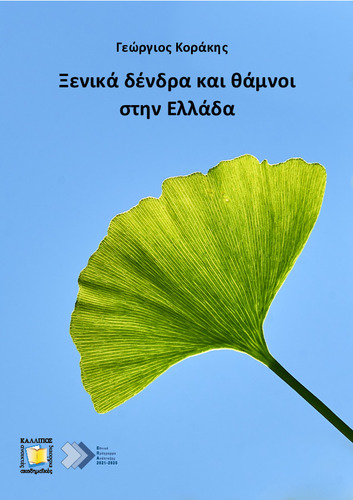| Title Details: | |
|
Exotic trees and shrubs in Greece |
|
| Authors: |
Korakis, Georgios |
| Subject: | NATURAL SCIENCES AND AGRICULTURAL SCIENCES > AGRICULTURAL SCIENCES > FOREST SCIENCE AND FOREST PRODUCTS > FOREST TREES NATURAL SCIENCES AND AGRICULTURAL SCIENCES > AGRICULTURAL SCIENCES > FOREST SCIENCE AND FOREST PRODUCTS > FORESTRY > URBAN FORESTRY NATURAL SCIENCES AND AGRICULTURAL SCIENCES > AGRICULTURAL SCIENCES > FOREST SCIENCE AND FOREST PRODUCTS > FOREST RESOURCES NATURAL SCIENCES AND AGRICULTURAL SCIENCES > AGRICULTURAL SCIENCES > PLANT SCIENCE AND PLANT PRODUCTS > HORTICULTURE > ARBORICULTURE NATURAL SCIENCES AND AGRICULTURAL SCIENCES > AGRICULTURAL SCIENCES > PLANT SCIENCE AND PLANT PRODUCTS > HORTICULTURE > ORNAMENTAL HORTICULTURE MEDICINE AND HEALTH SCIENCES, LIFE SCIENCES, BIOLOGICAL SCIENCES > LIFE SCIENCES > FUCTIONAL AND ORGANISMIC BIOLOGY > BOTANY / PLANT BIOLOGY > PLANT ECOLOGY |
| Keywords: |
Flora
Ligneous plants Invasive species Naturalized plants Forest plantations Ornamental plants Urban ecology |
| Description: | |
| Abstract: |
A significant part of the flora of the ligneous plants found in Greece are of exotic origin. Some species of alien trees and shrubs have been recorded since ancient times; however, the majority has been introduced after the 16th century and today many come from different continents. In the first chapter of the present book, the attributes and uses of alien species are discussed. Most exotic trees and shrubs are cultivated for their ornamental value and their contribution to improving the quality of the urban and suburban environment. Some have been used for fruit or timber production. In the past, fast growing trees were usually planted more or less systematically in productive and protective reforestations. Some foreign species with a highly competitive capacity have become naturalized and found suitable ground for their expansion. In the latter case, when they pose a potential threat to native biodiversity, they are characterized as "invasive". In the second chapter there is a description of the most important alien genera and species which have been distinguished into four major physiognomic groups. In the first group, species which are gymnosperms are described in detail. These are mainly conifers with the addition of Gingko biloba and cycad plants (Cycas spp.). In the second group the angiosperm tree species which are conventionally identified as "broadleaves" have been included. The third group contains the lianas and climbing shrubs whereas the fourth group includes palm trees and some other monocots which have tree or shrub growth (phanerophytes). For the presentation of genera and species, information is given on nomenclature, geographical distribution and origin, morphology, phenological data, ecology, biological requirements and ecological zone. In addition, reference is made to the currently known uses of the species and to the most popular or more common commercial varieties.
|
| Linguistic Editors: |
Kotzampasi, Maria |
| Graphic Editors: |
Kotzampasi, Dora |
| Type: |
Undergraduate textbook |
| Creation Date: | 13-03-2024 |
| Modification Date: |
01-07-2024 |
| Item Details: | |
| ISBN |
978-618-228-213-7 |
| License: |
Attribution - NonCommercial - ShareAlike 4.0 International (CC BY-NC-SA 4.0) |
| DOI | http://dx.doi.org/10.57713/kallipos-894 |
| Handle | http://hdl.handle.net/11419/12821 |
| Bibliographic Reference: | Korakis, G. (2024). Exotic trees and shrubs in Greece [Undergraduate textbook]. Kallipos, Open Academic Editions. https://dx.doi.org/10.57713/kallipos-894 |
| Language: |
Greek |
| Consists of: |
1. Species attributes and usage 2. Species description |
| Number of pages |
300 |
| Version: |
v1.1 |
| Publication Origin: |
Kallipos, Open Academic Editions |
| You can also view | |
| User comments | |
There are no published comments available! | |

